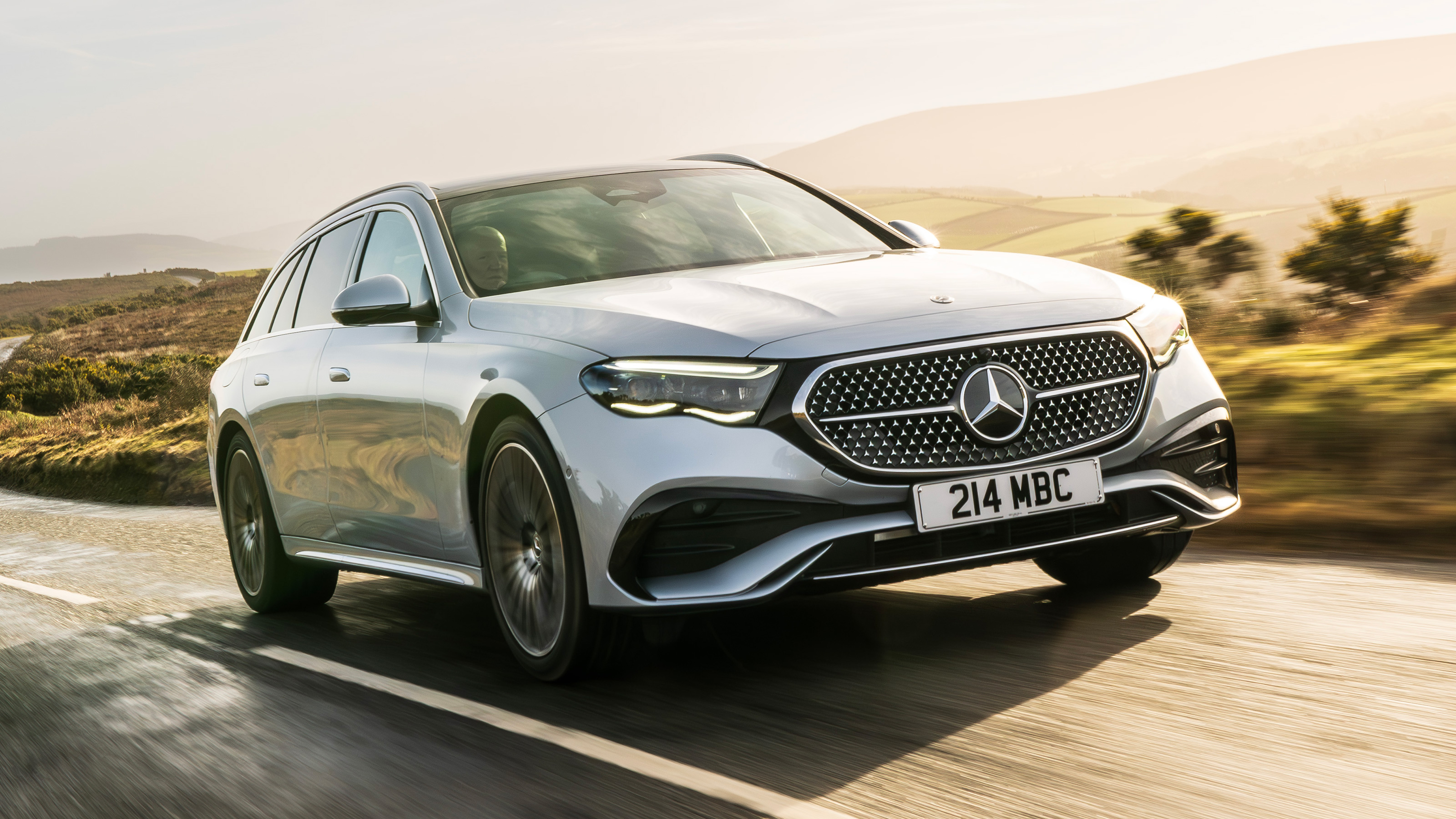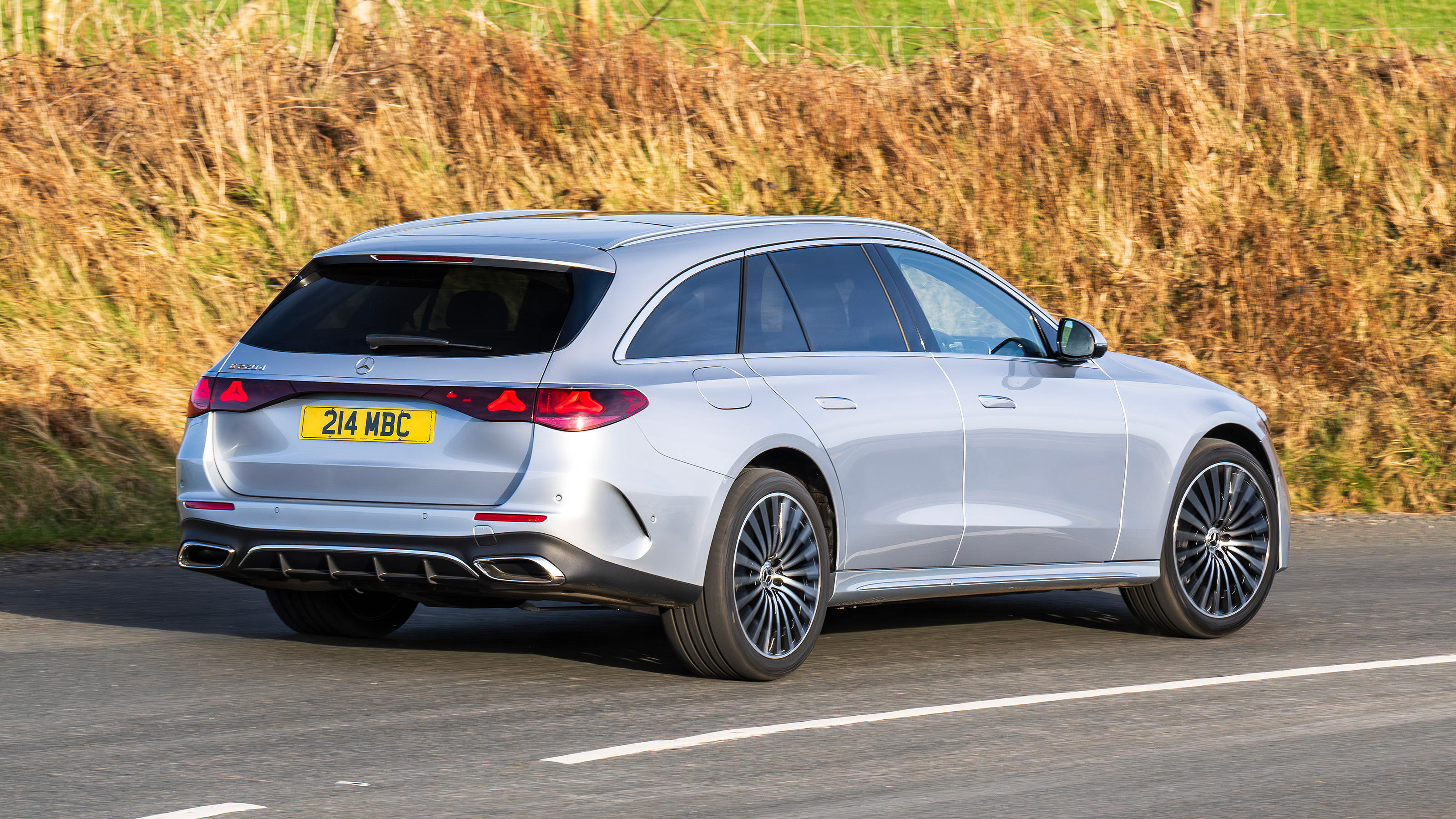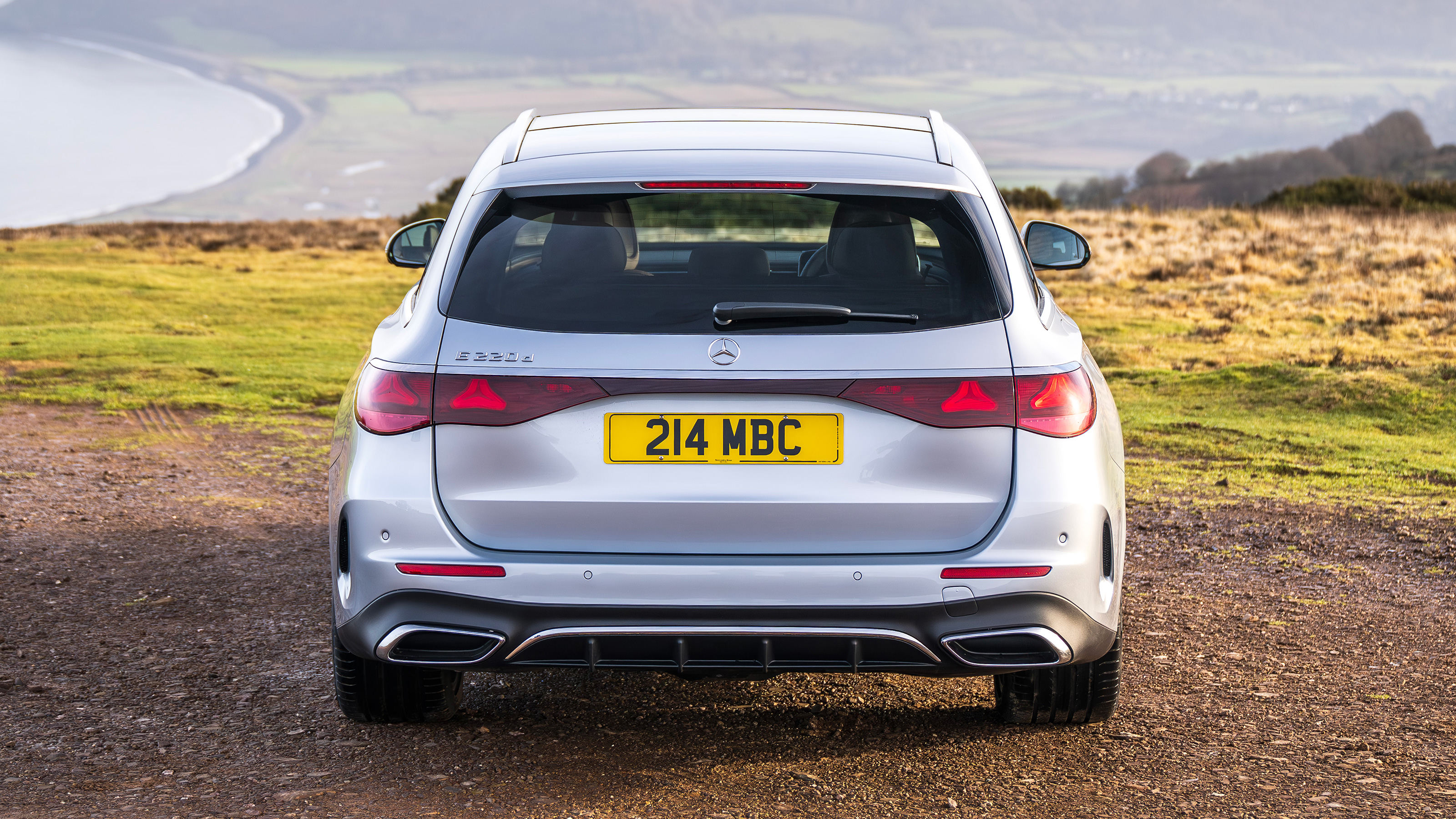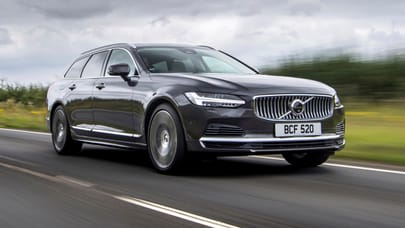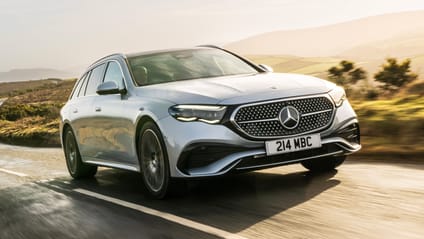
Good stuff
Soothing road manners, hybrid integration, still a sorted, spacious estate
Bad stuff
Hybrid eats into boot space, harsh petrol, MBUX Superscreen
Overview
What is it?
A premium load bay on wheels. Where BMW, Audi and even Volvo (now dearly departed from the scene) have long erred on the side of style, Merc’s E-Class wagon has put practicality first. But there are signs that’s changing.
Look at the window line. See how it droops at the back? How the tailgate is less upright than before? That’s bound to help aero (now 0.26Cd instead of 0.27) but it means less headroom for the family hound. And so it proves. The new E-Class estate (W214, for all you number geeks) has a 615-litre boot. Its predecessor enjoyed 670 litres. Go back to the W211 of the mid-Noughties and you had 690 litres of open area to play with.
Still, 615 litres is pretty good isn’t it?
It is, but it does mean the GLE SUV now has a bigger boot (630 litres) than the estate. Still, there’s not much in it, and unless the aforementioned hound is a particularly springy Collie, it’s going to prefer the lower hop up into the estate. The new BMW 5 Series Touring only has 570 litres.
But we do need to make one more thing very clear early on. There are currently only three E-Class Estate models to choose from: E200 petrol, E220d diesel and E300e plug-in hybrid. In order you’ll be thinking: ‘too slow’, ‘urgh diesel’ and ‘that’s the one for me’. Don’t be too hasty. Yes the hybrid has a handy 25.4kWh battery for approaching 60 miles of electric range, but that battery has to sit somewhere.
Let me guess, under the boot floor?
Under it and pressing upwards. In fact it pushes the whole floor up a significant amount, so total space is just 460 litres. Plus, there’s no underfloor storage. It does limit the hybrid’s appeal as a load lugger. One useful little feature that might help across the E-Class estate range: you can liberate an extra 30 litres of boot space by tilting the rear seats more upright. Your passengers will, of course, be delighted.
Tell me about the engines and line-up.
Don’t write off that E200 too quickly. Both it and the diesel have mild hybrid assistance with an integrated starter generator that gives the engine a small power boost and recaptures electric energy under braking. But still we’re only talking 201bhp and 236lb ft to shift a large 4,949mm long, 1,825kg estate. 0-62mph takes 7.8 seconds and at best the WLTP figures suggest 42.2mpg.
Opt for the 194bhp/324lb ft diesel and that rises to a potential 56.5mpg. And if you’re regularly going a long way, then look no further. Even if you only average 45mpg, that’s almost 650 miles between refills.
The hybrid teams the E200’s 4cyl turbo engine with a 127bhp e-motor for totals of 308bhp and 405lb ft. It’s quicker (6.5s to 62mph) despite being some 400kg heavier than the regular petrol. All are rear-wheel drive and this time round Merc won’t be bringing the much-loved-by-TG 4WD All-Terrain version to the UK. In due course there'll be a hot-ish E53, but no full house AMG. Merc’s attentions have shifted.
What goes on up front?
The usual. Lots of screens, lots of talk about built-in games and passengers being able to watch TV on the move without the driver being distracted thanks to the MBUX Superscreen. That’s standard on the top two tiers of the four level model structure (more on that in the Buying section). We think the E-Class is better off without it. The full width glass dash may be a talking point, but it’s not as attractive or tactile or useable as the regular screen layout. Swing and a miss.
At a more basic level it’s a very comfortable car to be in. Easy to see out of, easy to disengage the driving assistance systems, and although the seats are a bit flat – the same ones fitted to the EQE saloon if we’re not mistaken – this is a well designed, attractive and very well made cabin. With a selfie camera.
A selfie camera! I’m not even sure a Tesla has one of those?
Yeah, it’s not a good thing. It comes as part of the Superscreen and plonks an unblinking eye in the middle of the dash. It’s designed to work as a camera for all those times you’re on a video conference call, but it’s hard to escape the feeling that it’s watching you. We put some gaffer tape over it.
How does it drive?
We’ll write more about this on the Driving tab, but the news is good. It likes being driven in a relaxed manner, and if you do that it rewards with calmness, control and refinement. It’s placid, yet the chassis takes a bit of punishment without deteriorating. It holds itself together much better than the all-electric EQE. But the four cylinder petrol is a droning protest vote.
What’s the damage on one of these then?
About £2,500 more than the equivalent saloon. Well worth it for the image uplift alone, we reckon. You look less like an airport taxi. Now, back in 2020 a basic E200 wagon could have been yours for a little over £42,000. The world has changed, there’s been Brexit, Ukraine, Covid, inflation and it’s not just electric cars that have copped it. Prices for this all-new E-Class Estate now start at £57,780 on the road. The diesel is another £1,300, and you’ll pay through the nose for a hybrid; at least £66,860.
Our choice from the range

What's the verdict?
Like it or not, the estate is on the wane as SUVs continue to dominate the family market. The E-Class shows there’s still plenty of life in this traditional format. But it is quite conservative, treading a safe line, rowing back slightly on outright space, but not pushing the style too far. It’s probably a sensible approach.
Be wary of the hybrid’s loss of boot space and the overwhelming MBUX Superscreen on Premium Line cars and above. Don’t be too afraid of diesel or entry-level petrol. Both have their drawbacks, but should hold their value and don’t require you to mine quite so much Bitcoin to afford one. £70k will get you a fine, well built, capable – if unexciting – family hauler. And it’ll be cheaper to run and drive better than whatever SUV you had in mind.
The Rivals
Trending this week
- Car Review
BMW 1 Series
- Top Gear's Top 9
Nine dreadful bits of 'homeware' made by carmakers




